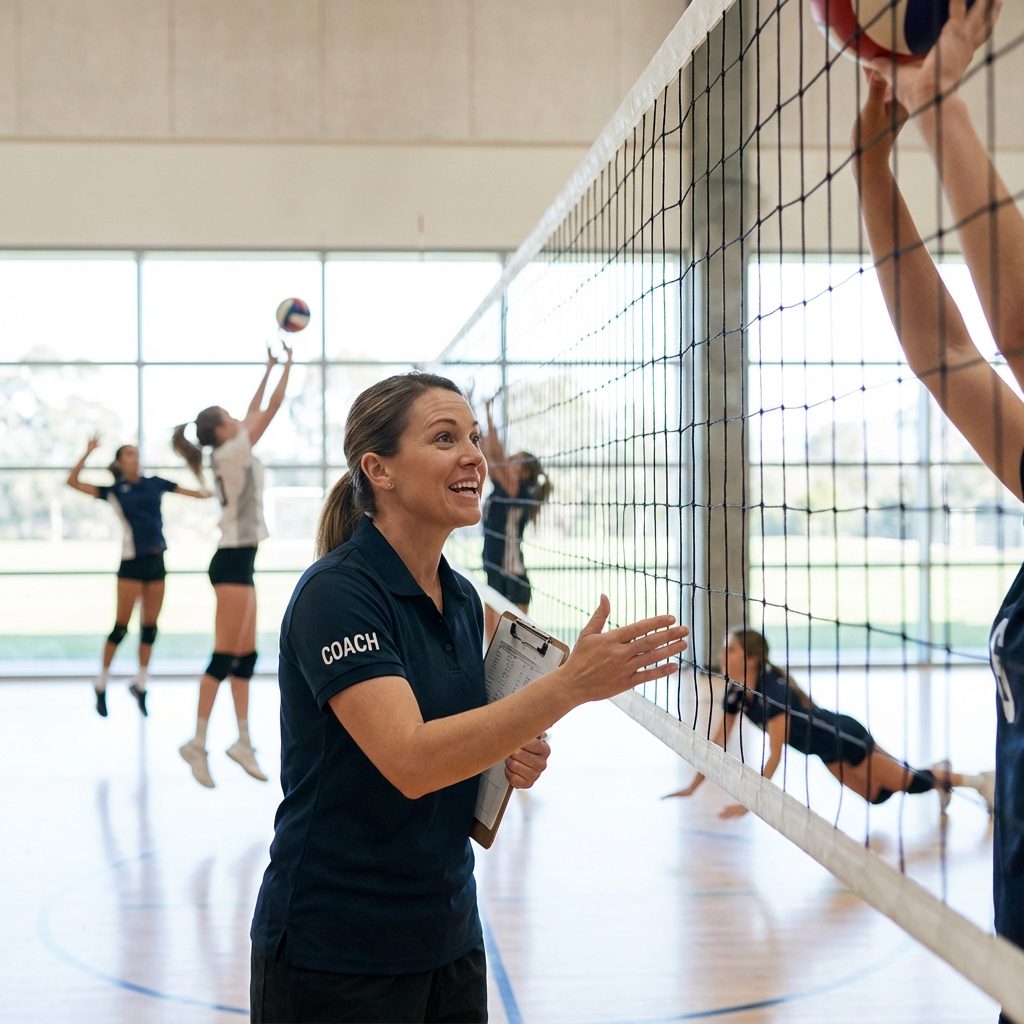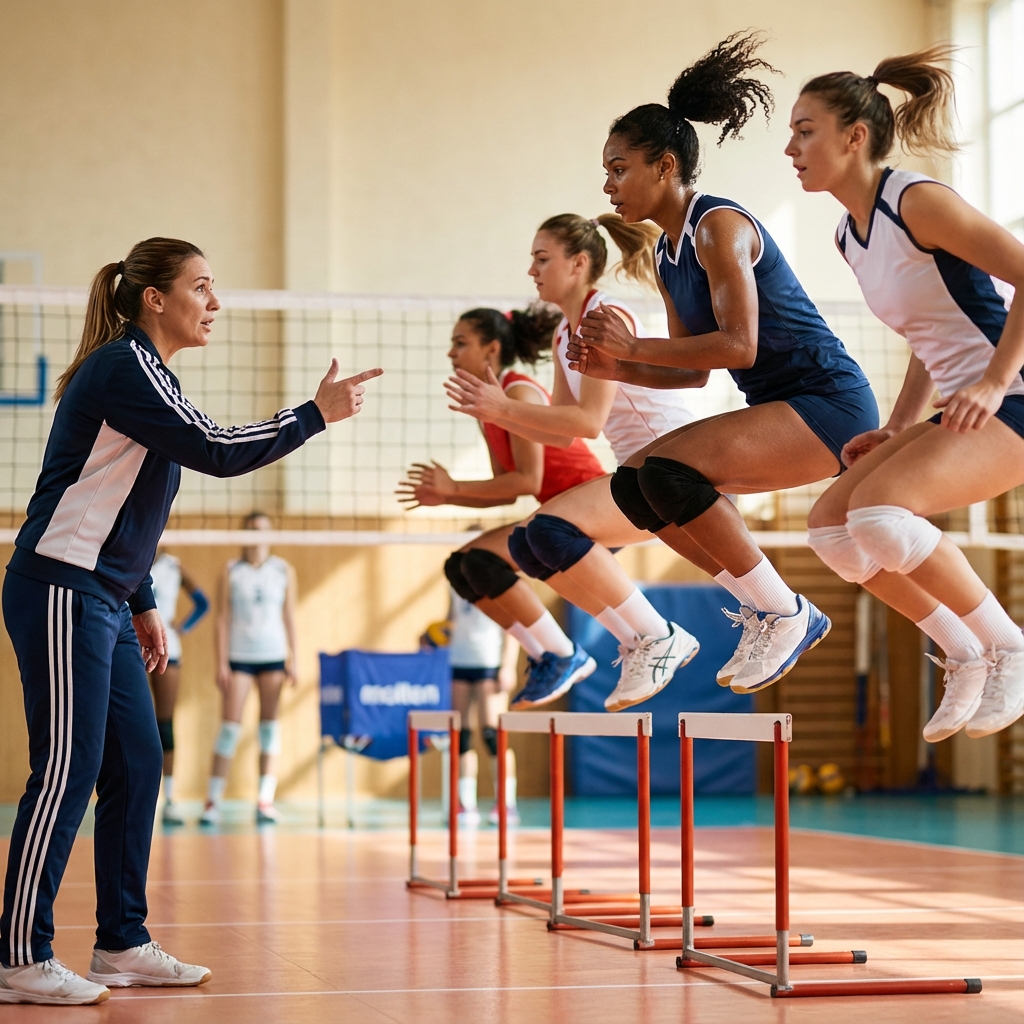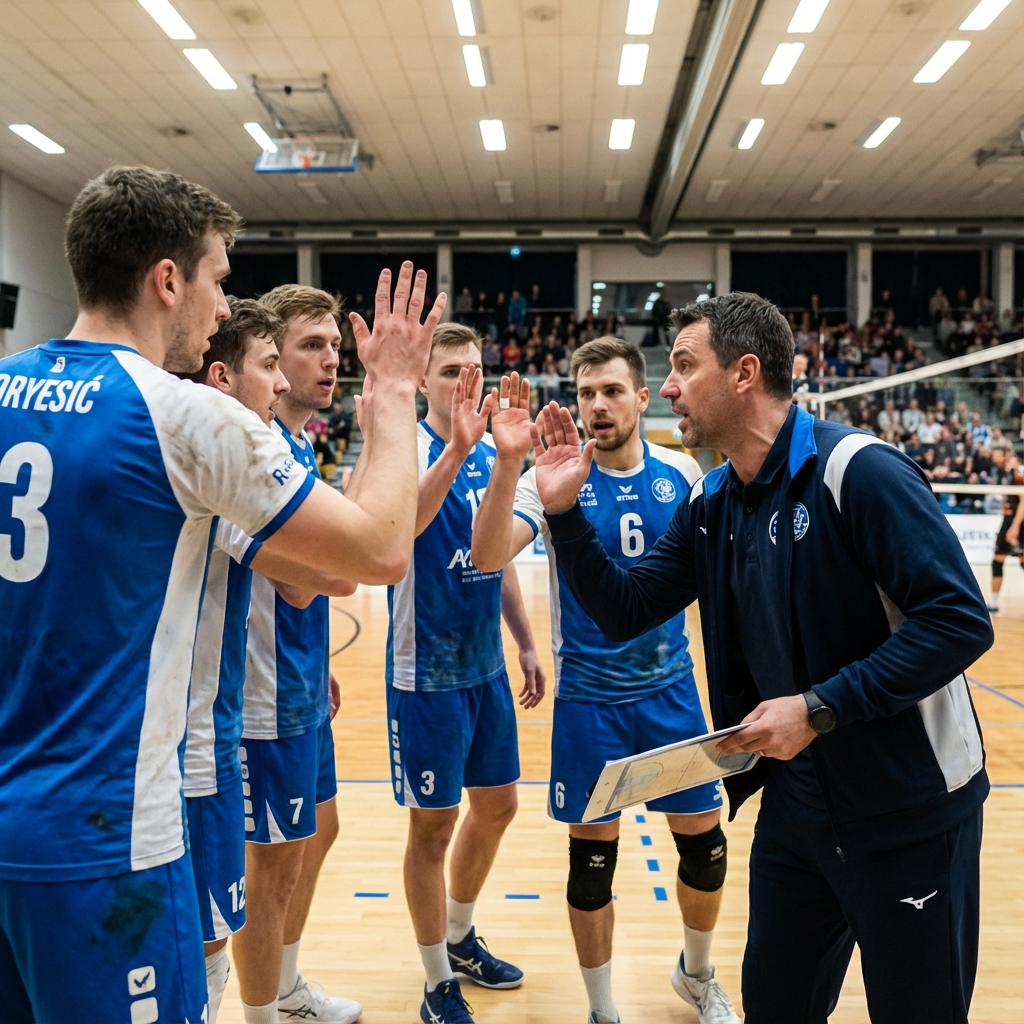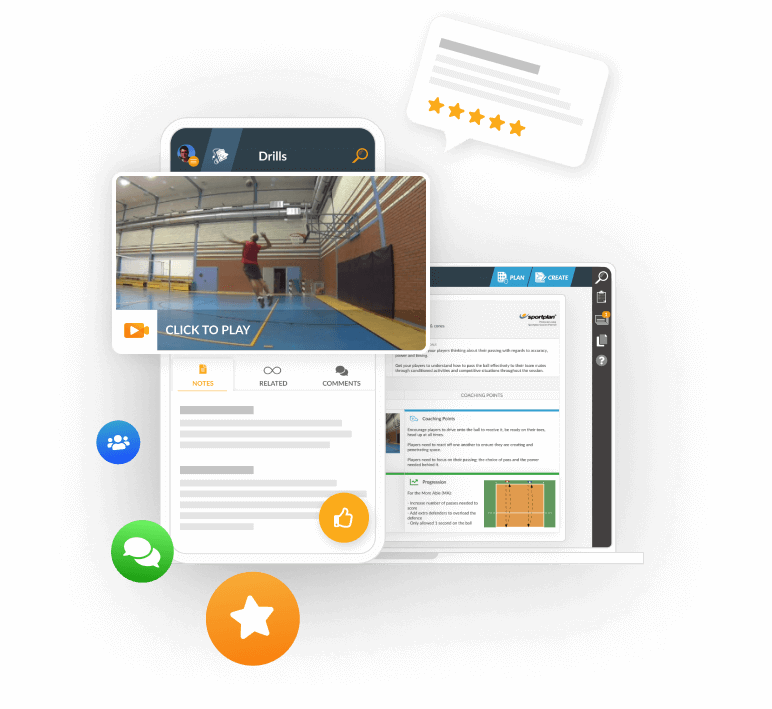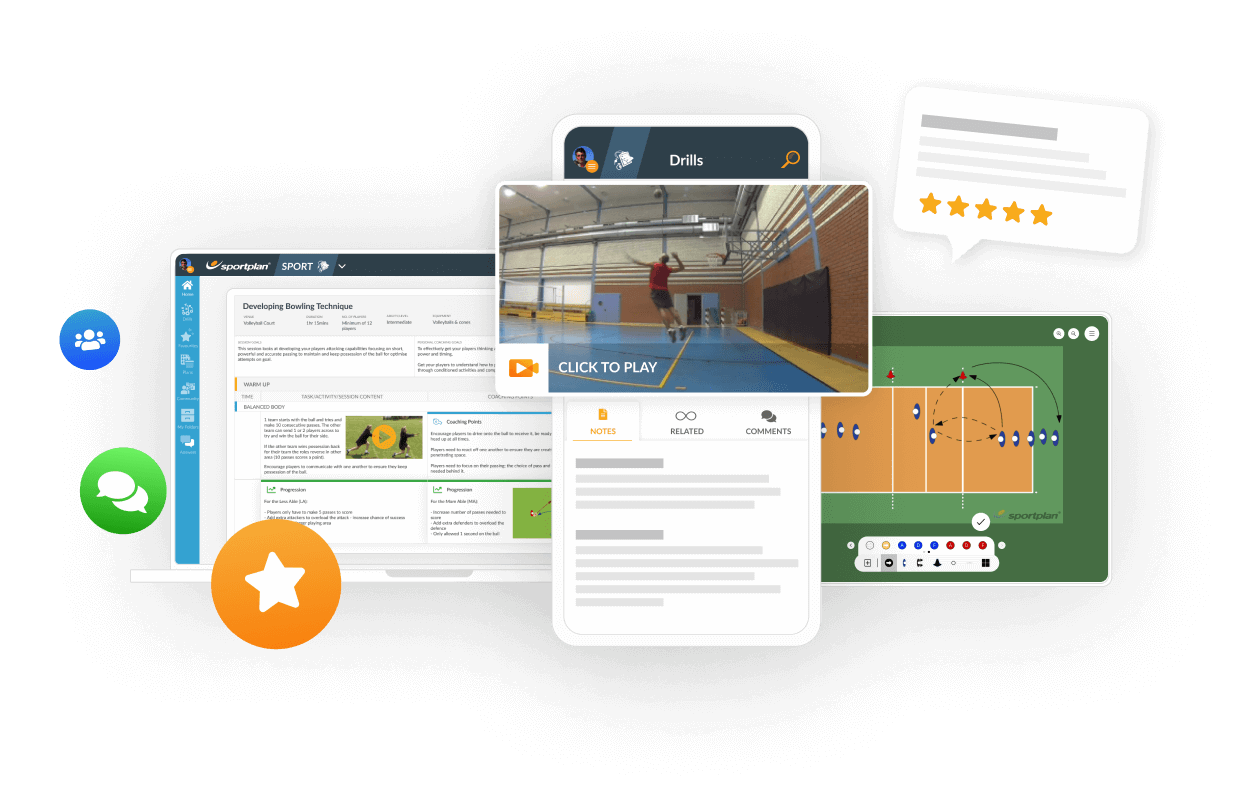How do i teach 9 and 10 year olds to serve?
how do i teach 9 and 10 year olds to serve
Try coaching the movement in stages, starting with a basic underarm throw (attached) and then then gradually increase the distance.
Start with just an underarm throw, then an underarm hit over the net and as players grow in confidence move onto an overarm hitting technique).

Underhand Serving: 3
DESCRIPTION
Underhand Serving: 3
DESCRIPTION
Kids this young have not developed strong shoulders yet. make sure you use a volleylite ball only. Another item is to start with a side arm serve like a baseball bat. They can get more distance on the ball. Over head serve can damage the rotater cup area if you use a regular volleyball. Start them all doing push up at home. have them keep a chart of their progress and reard them for reaching goals set by them and not the coach.
I agree with Alex. Start them with tossing or throwing the ball. When they get to the point of hitting the ball start them at the 10ft. line and work them back.
A "side arm" serve to me sounds like what I call "chicken wing", which is when player is too lazy to move their feet and just reach 1 armed to make contact during play. Which in my mind would be more damaging to shoulder then teaching proper techique. Tossing progressing to hitting is best way to go.
Start with footwork. Feet shoulder width apart, left foot slightly in front, balanced. Show then how to transfer their weight from back foot to front foot. This would be used for underhand or overhand serve. Use lightweight vballs and move to 10' line. Stiff wrist, elbow higher than ear, fingers pointed to sky, laser light in palm that points toward target entire swing. Teach to start draw back, toss and step at same time. If ball is a face, they want to make contact on the mouth of the ball. Follow through to their pocket. Keep shoulders and hips square to net when they finish. If they have the strength to serve overhand, let them. If not, show them underhand for games but work on both in practice.
While I aree, in general with using a volley lite for athletes that age (especially since that is what they will most likely use in formal competitions), I am of the opinion that we should never teach the underhand serve. I find that we get out of kids what we expect most times, so teaching them the components of a good overhand serving technique pays a lot of dividends. I respect some coaches` opinions and feelings around potential for physical damage, but I believe that is all the more reason to teach the fundamentals of good technique. A person who has a decent overhand serve technique poses very little risk to themselves for any damage at all. It is the poor technique that brings with it the most inherent risks.
Mike, in the post above me here, has a lot of the basics just right! I`d like to add a few things to his to build on what he has started...
We typicall start young ones with a serving progression that starts at the 5` line and overhand serves to a partner. We then move that to 10`, 15`, 20`, then full court, moving to the longer distance when they have repeatedly succeeded at the shorter distance.
Mike uses the term "stiff wrist". I like that. To further emphasize that, we also say "hard hand". We ask players to imagine a string tied to the tip of their pinky finger. We then have them imagine that string tied behind their hand to the tip of their thumb. Then we ask them to pull that imaginary string tight! This opens their hand wide and gives it a stiffer platform from which the ball will rebound.
The whole weight transfer thing is so key. Spend some time there and try to say it in different ways to helpd the players really understand this and get the feel for it. Good weight transfer is MUCH more important than arm strength or speed!
When working on weight transfer, we help athletes understand what an open posture is. Face forward, address the ball, then pull your serving hand back high so that your body is now perpendicular to the net with your hand (stiff wrist, hard hand) behind you and above your head. Ball is held out in your non-hitting hand in front of you. During the weight shift, you start to swing your arm through while coming from an "open" stance to a "closed" stance. A closed stance is face, shoulders, and hips parallel to the net (or the direction you are hitting). The best athletes naturally lead a little with their hip as they come from an open to a closed stance. It almost goes toss, hip, shoulder, elbow, hand, serve!
When young players practice taking a full swing at the ball, I agree that the hand should finish on the player`s pocket or hip, or across their body. However, in our gym on the serve, we teach to hit through the ball and then hold a high finish with the player`s palm and fingets pointing towards where they intend to serve. Holding the finish allows them a chance to see how they struck the ball and then do some self-correcting on the next attempt.
I think if you combine all of this with what coach Mike has above, you will be well on your way to teaching those little ones to serve the right way all the time. Plus, at that age, teams that overhand serve consistently normally win! Good luck!
(There is abviously a lot of nuance in teaching this to young players. If you ever want to dive in even deeper, feel free to drop me a line!)
Shoot! I forgot one of the biggest things we do with new overhand servers. For a while, have them do nothing but hold the ball in their non serving hand, pull back to an open stance with a high, hard hand, and then toss and let it hit the ground. During this, stress that the toss is consistently tossed higher than the serving hand, but not too high. That toss should be somewhere around even with where your serving shoulder will end up after the serve. The ball should land 1-3 inches in front of your forward foot (but to the serving shoulder as noted above). We dedicate time to perfecting the toss whenever we teach serving. For servers struggling with consistently contacting their serve or controlling locations, have them practice their toss more. They can even do it at home or when not in the gym. Good tosses generally equal good serves!
I totally understand the idea of not teaching underhand, and respect the knowledge of Harry Hendon, during my practices I mandate training for the overhand serve daily; with the ultimate outcome of every player to be able to overhand serve by the end of the season if not before. However, some players at that age (at least in many non-VB focused states) unlike Colorado have never touched a ball;(VB or any other ball) and are not coordinated nor athletic enough to learn right away the mechanics needed for an overhand serve; which can lead to lack of confidence. I have been coaching for over 15 years, rebuilding VB programs; so I am working with 90% players that have no background in athletic sports and several don`t even know their right from their left; ages 11-13. I believe in starting with the underhand then side arm, and stress the idea that during a competition, the young unconfident player needs to use the serve that they are most consistent with. Their goal is always to learn and perfect the Overhand-and practice it at every practice... when a coach has players with low athletic abilities, it takes time to perfect the overhand, and in my experience I find that having another serving option helps to build their confidence during the season.










